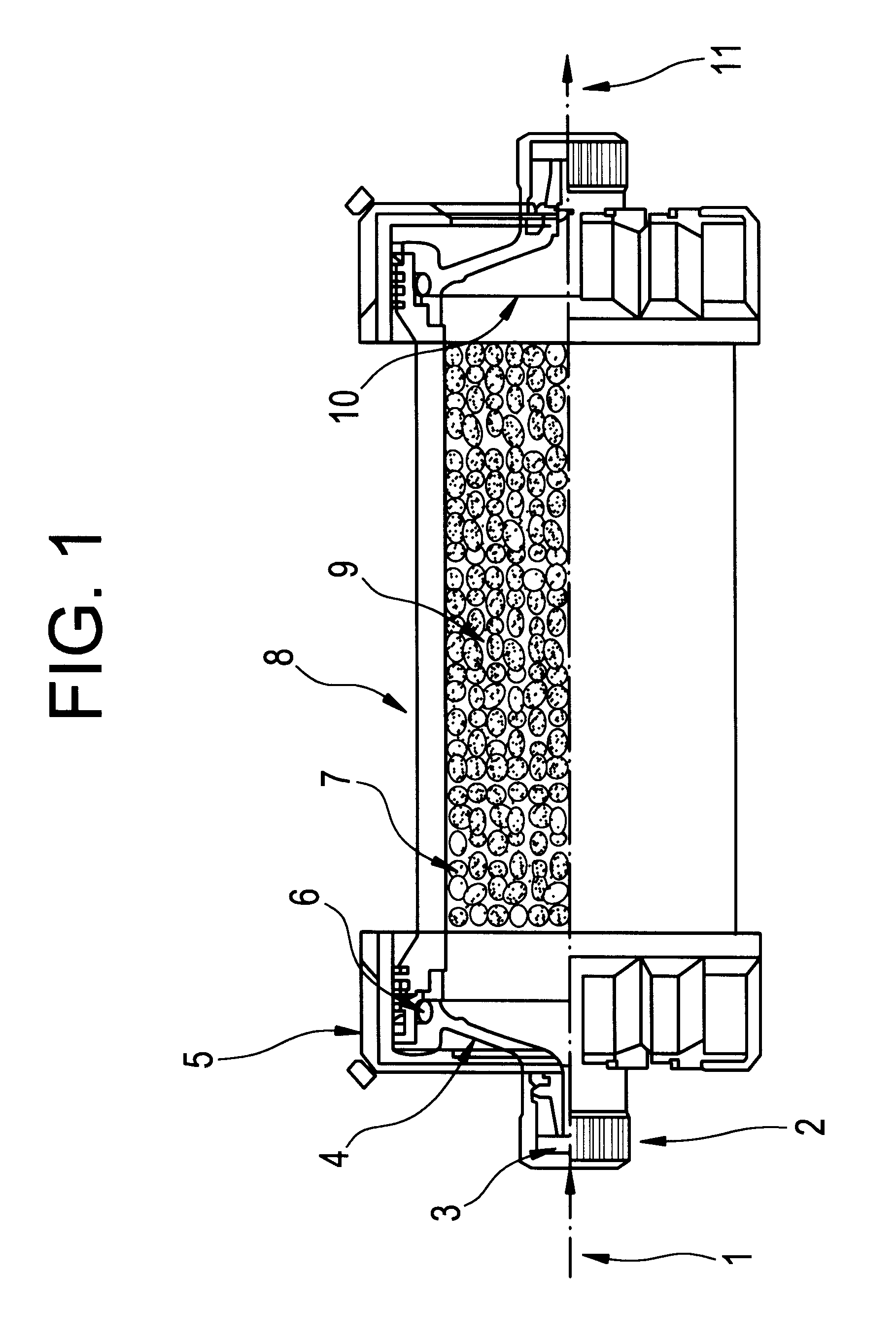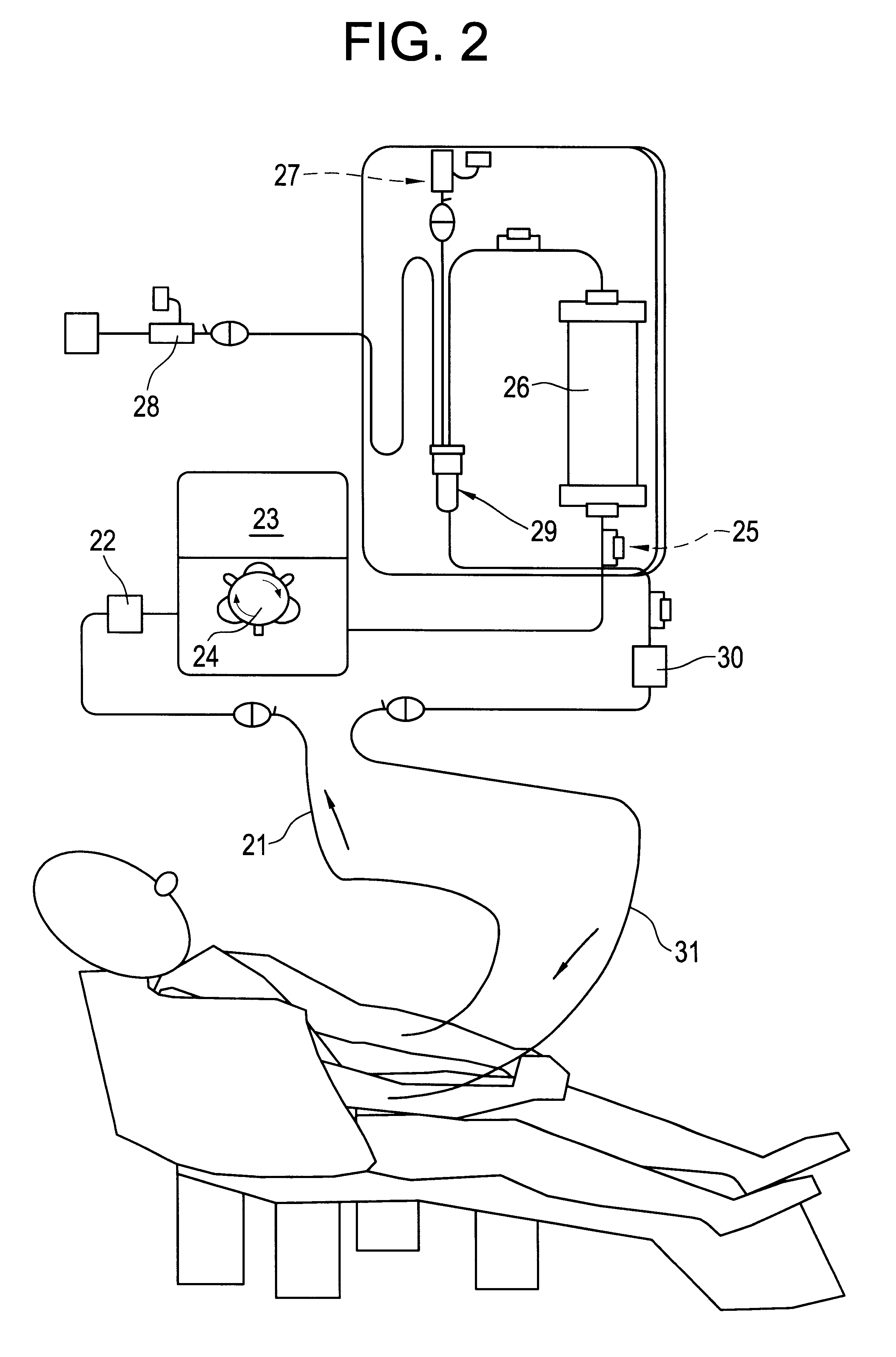Methods of treatment of disease using adsorbent carriers
a technology of adsorbent carriers and disease, applied in the direction of osmosis/dialysis, separation with moving sorbents, alkali metal oxides/hydroxides, etc., to achieve the effect of reducing total hiv-1 dna, increasing leucocyte production, and reducing plasma hiv-1 rna
- Summary
- Abstract
- Description
- Claims
- Application Information
AI Technical Summary
Benefits of technology
Problems solved by technology
Method used
Image
Examples
examples 1 to 10
HIV-1-infected patients who were receiving HAART, but had developed resistance or were partial responders to HAART were selected for apheresis therapy according to the selection criteria given below. The results of apheresis therapy are presented Examples 1 to 9 below and in FIGS. 3 to 14.
FIG. 3. A graph showing the change in the number of copies of HIV-1 DNA per 10.sup.5 peripheral blood lymphocytes (PBL) with time (in weeks) during the course of apheresis treatment of a patient with low HIV-1 DNA count before apheresis treatment.
FIG. 4. A graph showing the change in the number of copies of HIV-1 DNA per 10.sup.5 peripheral blood lymphocytes (PBL) with time (in weeks) during the course of apheresis treatment of a patient with high HIV-1 DNA count before apheresis treatment.
FIG. 5. A graph showing the change in the number of copies of HIV-1 RNA (.times.10.sup.3) per ml blood with time during the course of apheresis treatment of an HIV-infected patient.
FIG. 6. A graph showing the cha...
example 1
Treatment of an HIV-infected Patient Who Had a Low HIV DNA Count at Baseline
Baseline was the level of HIV-1 DNA before apheresis treatment was commenced. Immediately after baseline blood sampling, the patient received apheresis; one apheresis per week, at a flow rate of 30ml per minute, duration of each apheresis was 60 minutes. The fall in HIV-1 DNA following apheresis with the G-1 column is shown in FIG. 3. HIV-1 DNA was quantified using a standard quantitative polymerase chain reaction assay (Amplicor HIV Monitor.TM., Roche, Basel, Switzerland) on peripheral blood mononuclear cells. The results indicate that apheresis with the G-1 column can flush out the HIV-infected resting cells. No drug is known that can produce such a rapid fall in HIV-DNA load.
example 2
Treatment of an HIV-infected Patient Who Had a High HIV DNA Count at Baseline
Immediately after baseline blood sampling, the patient received apheresis; one apheresis per week, at a flow rate of 30 ml per minute, duration of each apheresis was 60 minutes. The fall in HIV-1 DNA by apheresis with the G-1 column is shown in FIG. 4. Again (as in the case of Example 1), the results indicate that apheresis with the G-1 column can flush out the HIV-infected resting cells. No drug is known that can produce such a rapid fall in HIV-DNA load.
PUM
| Property | Measurement | Unit |
|---|---|---|
| Diameter | aaaaa | aaaaa |
| Diameter | aaaaa | aaaaa |
| Diameter | aaaaa | aaaaa |
Abstract
Description
Claims
Application Information
 Login to View More
Login to View More - R&D
- Intellectual Property
- Life Sciences
- Materials
- Tech Scout
- Unparalleled Data Quality
- Higher Quality Content
- 60% Fewer Hallucinations
Browse by: Latest US Patents, China's latest patents, Technical Efficacy Thesaurus, Application Domain, Technology Topic, Popular Technical Reports.
© 2025 PatSnap. All rights reserved.Legal|Privacy policy|Modern Slavery Act Transparency Statement|Sitemap|About US| Contact US: help@patsnap.com



